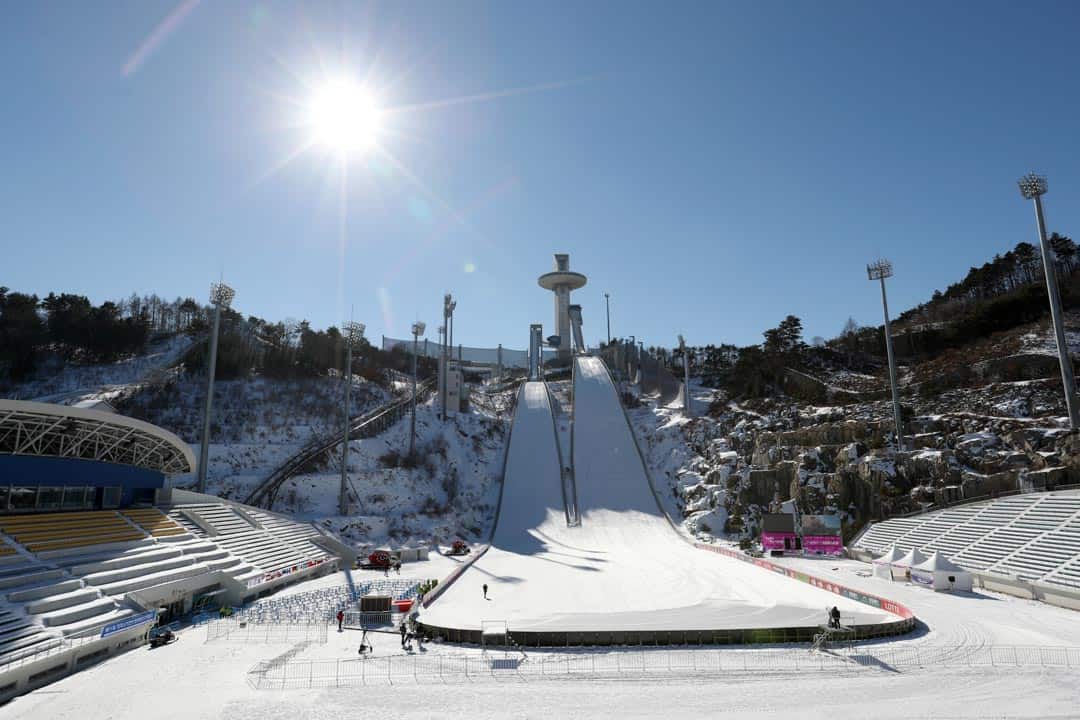Later this week, 35,000 people will gather at the Pyeongchang Olympic Stadium in South Korea to mark the opening ceremonies of the 2018 Winter Olympics. The $132 million facility will host the opening and closing ceremonies for both the Olympic and Paralympic Games before being torn down.
The International Olympic Committee (IOC) still has concerns regarding the future of some of the other venues in Pyeongchang. It warned in a report that, without a plan for how these venues will be used after the games, these events could end up as white elephants.
The 2004 Summer Olympics in Athens, Greece were a prime example of what the IOC is worried about. In the years following the games, Greece suffered a massive financial crisis after its sovereign debt levels rose to unsustainable levels. Today, many of the venues built for the Olympics are abandoned and overrun with weeds, although one of the decaying venues served as a refugee camp in the wake of the refugee crisis.
‘White elephants’ was the term used by Brazilian federal prosecutor Leandro Mitidieri to describe many of the venues used during the 2016 Summer Olympics held in Rio de Janeiro. Mitidieri, who is investigating corruption at the games, slammed the organizers for having “no planning when they put out the bid to host the Games.” Among the troubled venues are the athletes’ village, which was repurposed into luxury condominiums that are over 90 per cent unsold, and the decrepit Maracanã stadium, which now has brown grass, no electricity, and has been looted and vandalized.
Closer to home, Montréal’s Olympic Stadium, which is known as the ‘Big Owe’ due to the cost overruns involved in its construction, is only seldom used for sporting events and concerts after the Montréal Expos relocated to Washington, DC in 2004. Québec taxpayers are footing $17 million per year to fund the Régie des installations Olympiques, which is the body responsible for maintaining the stadium, as well as $250 million for a new roof. The current roof is not strong enough to handle more than three centimetres of snow, meaning the stadium, like in Athens, was most recently used to house asylum seekers last November.
The Bird’s Nest Stadium in Beijing and the Fischt Olympic Stadium in Sochi were built for the two the most expensive Olympics — the 2008 Summer and 2014 Winter Olympics, respectively — and have also seen sparse post-Olympic use. Although these venues will be re-used in the 2022 Winter Olympics in Beijing and the 2018 FIFA World Cup in Russia, as with the Montréal Olympic Stadium, neither of the stadiums has professional sports teams permanently playing home games.
In Pyeongchang, venues with uncertain futures include the 10,000-seat Gangneung Hockey Centre, which was going to be the home ice for a professional hockey team before the team pulled out of the agreement, the Gangneung Oval, which will host speed skating events, and the skiing venues.
To avoid white elephants, cities should either have robust legacy plans prepared for any new permanent venues or rely on existing or temporary venues.
Los Angeles is on the right track with its plans for the 2028 Summer Olympics, which will almost entirely rely on existing facilities and will require no new permanent venues. Among the city’s proposed venues are the Los Angeles Memorial Coliseum — which was previously used for the Olympics in 1932 and 1984 — to host track and field events and the student residences at University of California Los Angeles and University of Southern California to house athletes and the media.
Calgary, which hosted the 1988 Winter Olympics, is also considering a bid for the 2026 Winter Olympics, and the IOC has indicated that the city could easily reuse many of the 1988 venues.
Only time will tell if the new venues in Pyeongchang will find new life after the games or fall into disuse.


